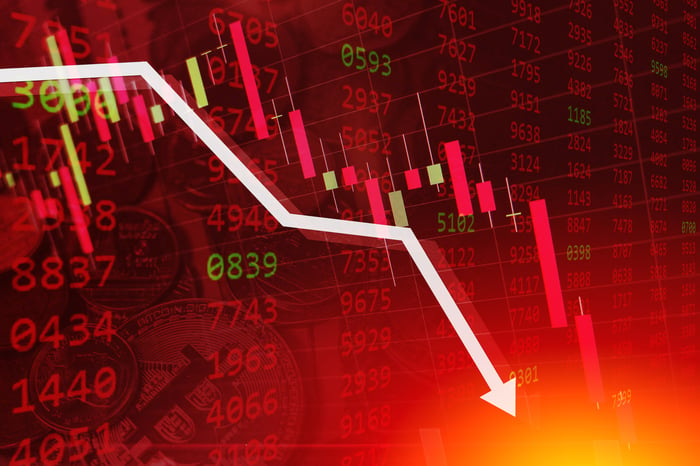What happened
Shares of retail stocks including Gap (GPS -0.80%), Wayfair (W -0.02%), and Nordstrom (JWN 4.40%) were all falling today after a disappointing earnings report from Target (TGT 1.28%) cast a pall over the discretionary retail sector.
Target is seen as something of a bellwether in discretionary retail as it's one of the largest retailers in categories like home goods and apparel, and it draws customers from a wide range of demographics. With Gap and Nordstrom's third-quarter earnings reports not yet out, investors seemed to take a dimmer view of those retailers, especially since they've underperformed Target in recent years. Wayfair, meanwhile, has already reported third-quarter earnings, but Target's update may signal that a recovery is further away than hoped.
As of 1:11 p.m. ET, Gap stock was down 6.2%, Wayfair had lost 8.7%, and Nordstrom was 10% lower. At the same time, Target plunged 12.5%.

Image source: Getty Images.
So what
Target's top-line results were essentially in line with estimates, but its profits came in well short of expectations as the company cited the impact of inflation, higher interest rates, and economic uncertainty on spending in discretionary categories. Even worse, it expects a comparable sales decline in the fourth quarter.
In the third quarter, comparable sales rose 2.7% at the retailer, and overall revenue rose 3.4% to $26.5 billion, slightly ahead of estimates. Target said consumable categories like beauty, food and beverage, and household essentials were strong, while more discretionary categories like apparel, home, and electronics were softer.
For the current quarter, management said that sales trends remain soft through November, and that it now expects a low-single-digit comparable sales decline in Q4 as well as an operating margin of just 3%.
Target did note that it gained "unit share," a measure of market share based on volume rather than dollar value, in all five of its core merchandise categories -- a sign that it may have outperformed peers like Gap and Nordstrom, even with its weak results.
The implications for its retail peers are clear, especially after Amazon guided for just 2%-8% revenue growth in its fourth quarter. Gap and Nordstrom are already in a much weaker position than Target, and didn't get the same pandemic surge that Target did.
Gap, for example, appears to be reeling on multiple fronts. It recently ended its partnership with Kanye West, a deal that was supposed to bring in $1 billion in sales over a decade after it began in 2020. Former CEO Sonia Syngal, who was hired in 2020 to turn around the struggling retailer, was ousted from the company in July, and Gap has had a temporary CEO for four months. It also took the odd step of listing some merchandise on Amazon, which could boost sales but lower margin for Gap.
The company is set to report third-quarter earnings tomorrow, and analysts expect profits to shrink to breakeven from $0.27 per share in the quarter a year ago, while calling for a 3.6% decline in revenue to $3.8 billion.
Gap may be a closer peer to Target than Nordstrom is, as Nordstrom tends to focus on a higher-income customer. But Target's results are still informative, especially as both companies have invested heavily in the e-commerce channel. A key difference between Target and Nordstrom is that Nordstrom's revenue is essentially flat from pre-pandemic levels, and though sales were up 12% in its most recent quarter, the company seems to have lost market share over the last few years. The stock is also down substantially since the start of 2020, a sign investors have given up on the retailer.
Nordstrom's third-quarter earnings report is due out Nov. 22, and investors are expecting a decline in both sales and earnings per share.
Finally, Wayfair's third-quarter earnings report earlier this month was underwhelming. The company reported its fifth-straight quarter of declining sales, with revenue down 9%, showing the pandemic hangover lingering in a difficult macro environment. The company said it would lay off 5% of its workforce back in August, but still has more cost-cutting ahead as it plans to cut roughly $500 million in expenses next year.
Now what
Investors are clearly steeling themselves for a rough holiday season, which is especially bad for retailers like Gap and Nordstrom as they tend to make an outsize portion of their annual profits in the fourth quarter.
With interest rates still expected to go higher, the consumer discretionary sector could get worse before it gets better. Given that, it's hard to bet on stocks that were already weak coming into the economic slowdown.




